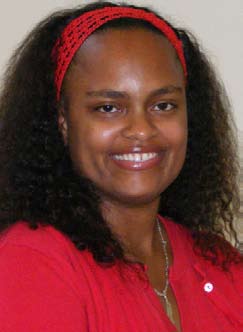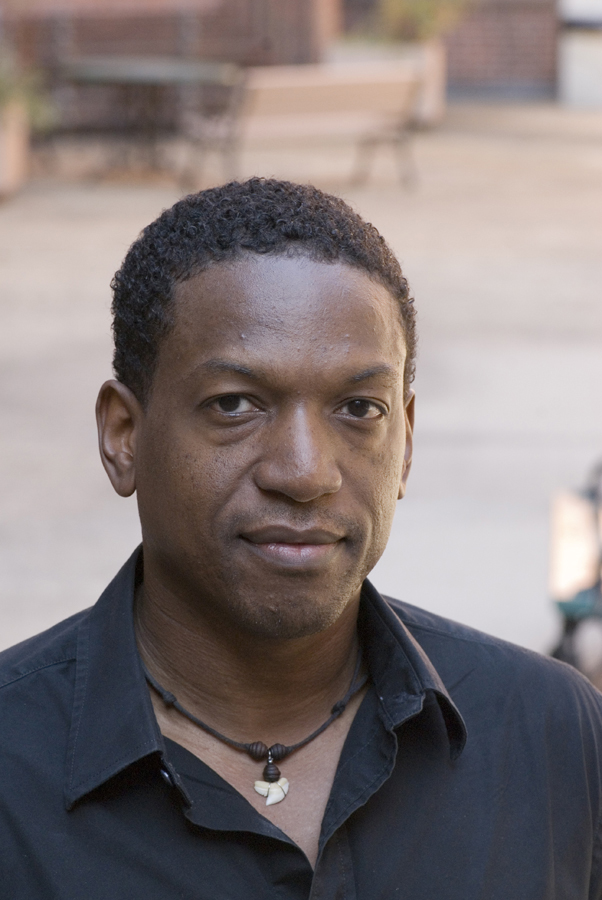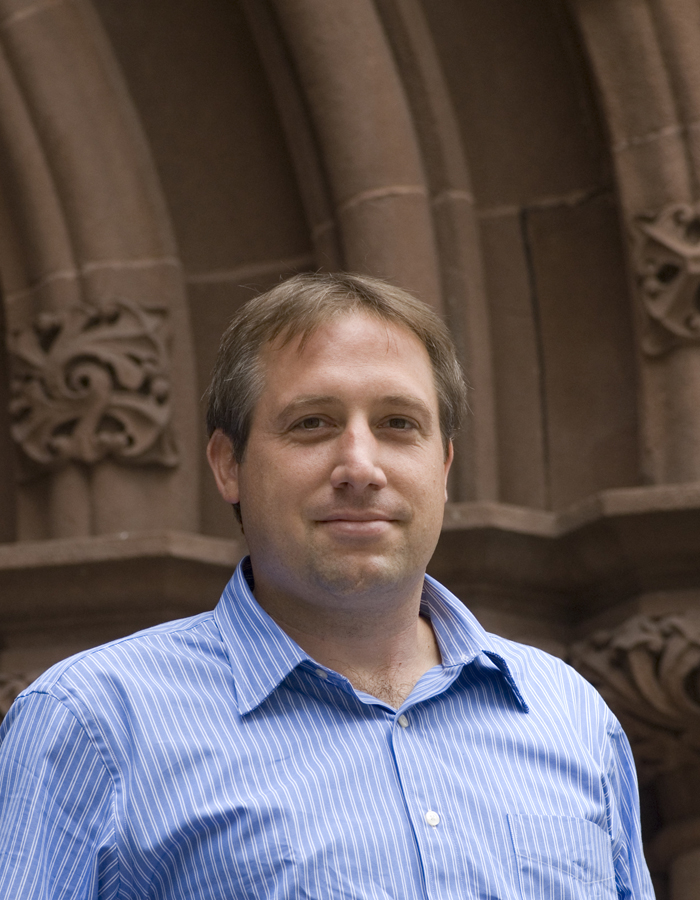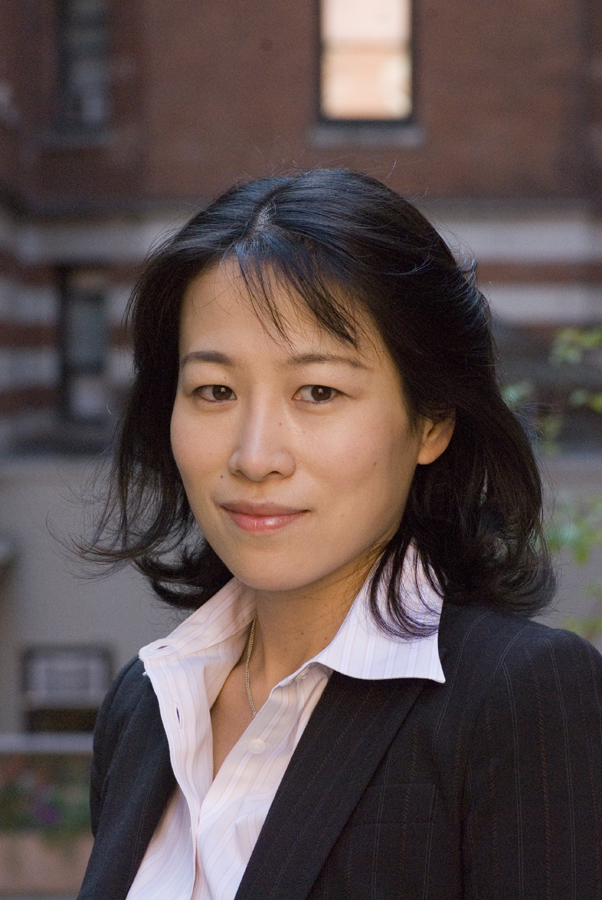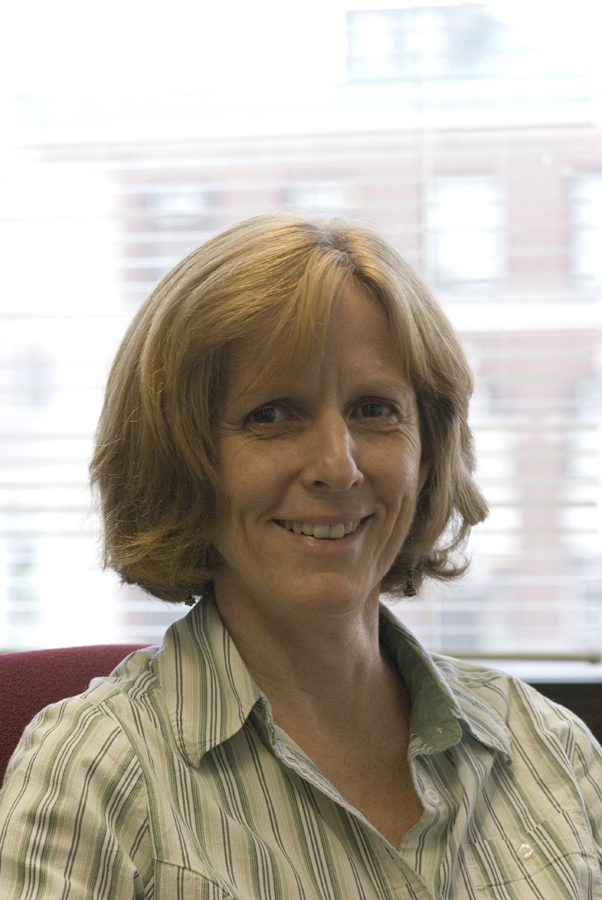New Faces at TC
When Numbers Aren't Cold
Statistician Matthew Johnson is using his craft to plumb the human brain
Statistics is the bane of many aspiring social scientists. For Matthew Johnson, who joined TC this fall as Associate Professor of Statistics and Education, it has been a way of defining the most intangible areas of human intelligence.
That's a pursuit that, more than a century after the French psychologist Alfred Binet first tried it, many in the field still view as an impossibility.
"Everyone has an idea about what intelligence is," says Johnson, "but how do we quantify it?"
Johnson, an applied statistician, answers that question by analyzing data from the perspectives of educational, behavioral and social science, sometimes developing new statistical models to measure everything from panic attacks and how they relate to suicide, to how the health literacy of parents affects their children. "In very basic terms," he says of this work, "it's taking the responses to a bunch of questions and converting them into one answer."
Johnson developed his love of numbers as a kid growing up in a small town in
Johnson subsequently spent two years working for Educational Testing Services, the company that administers the GRE and SAT tests. He also worked on the National Assessment of Educational Progress (NAEP), analyzing data from the 2000 mathematics assessment and the 2001 geography assessment.
Six years ago, he left that position to become an associate professor of statistics at
Johnson jumped at the opportunity to work at Teachers College, in the Measurement, Evaluation and Statistics Program of the Department of Human Development, and he is looking forward to collaborating with people from other disciplines around the school-'"psychologists, sociologists, economists-'"and helping them analyze their findings.
He's also eager to turn a new group of students on to the world of statistics. This semester, he is teaching an introductory level statistics course. Next semester, he will teach a more advanced class for statistics majors and students interested in applying statistical models to their own research.
Sharing his enthusiasm about statistics is definitely the most rewarding part of the job for Johnson, but he's not na-ve about how students may view the subject. "There's always math phobia," he says. "You try and encourage them and let them know it's not as difficult as it seems."
following in great footsteps
Tara McIsaac has taken
Tara McIsaac's goal is to contribute to the field of motor learning and rehabilitation by discovering unique ways for people with Parkinson's disease and other disorders to move around naturally and effortlessly.
For a rookie faculty member, that might sound like hubris-'"but McIsaac's role model is Ann Gentile, a giant in the field of movement sciences whose retirement this spring created a job opening for McIsaac at TC. Then, too, McIsaac has already defied some considerable odds.
At 16, she aspired to be a jazz pianist like McCoy Tyner. At 18, she became pregnant and chose to start a family, dedicating her life to raising her children. In her subsequent struggle to escape minimum-wage jobs, she worked as a bodybuilder and fitness center manager; sold western wear; made belts; and ran river trips in
"I'm 47, I've gone through a lot of hard things," says McIsaac. "Still, to this day, the hardest is being a single mom going through school."
When an orthopedic surgeon that McIsaac knew from the fitness center in
It was in
She speaks passionately of her desire to make the fruits of her research applicable outside traditional medical channels. McIsaac says she will look to help students, athletic trainers, yoga instructors-'"whomever might stand to benefit-'"understand the unique ways people with and without neurological impairments learn movements.
"People with problems moving due to injury or disease, such as stroke, brain injury or Parkinson's disease, are seen in the medical system by physical, occupational and speech therapists for a defined amount of time," she says. "Eventually they may participate in sport or leisure activities in the community, at the local gym, yoga class or dance studio, and will be much better served by instructors educated in the unique problems associated with their injuries."
Discovering that relationship between the brain and movement is McIsaac's quest, the thing that motivates her to take her research out of the lab, into the classroom and, ultimately, out into the community.
At the same time, she believes that the field of physical therapy benefits from research at a rigorous level that is on par with the hard sciences.
Pushing further in that direction won't be easy-'"but for McIsaac, the journey has always been half the fun.
I and Robot
How, really, can futuristic gadgets help us learn? Sandra Okita explores the learning partnership between people and technology
Where others walk through today's toy stores and see high-priced stuff with complicated instructions, Sandra Okita envisions a world where toys and other tools evolve into technological learning partners that expand students' understanding of the world.
Okita, whose expertise spans education, psychology, and human-computer interaction, takes an interdisciplinary approach to the study of technology in education, an area that is thriving at TC. This fall, Okita teaches a course, "Instructional Design of Educational Technology," that examines what features can be built into technology to help kids learn.
"Teachers College is one of the few schools of education today that have an established focus on this kind of interdisciplinary research," Okita says. "The students and faculty are stimulating, adventurous, and open to new ideas. It's a great fit for me."
Okita grew up in California and attended Keio University in Japan, drawn by their strong interdisciplinary program in humanities and computer science. She then earned a master's degree in psychology and a doctorate in education, both from Stanford University. It was there, doing volunteer work in an eating disorders clinic, that she found her true calling to explore the social components of technology. A nurse in the clinic focused on caretaking responsibilities for virtual pets as a way to persuade an anorexic teenager to eat. Okita discovered that through this simple "caring for" and primitive feedback, the child could develop a strong relationship with technology. The child was aware of the consequence of starvation, but knowledge alone did not trigger behavior. What drove her to eat was the strength of this social component, and the relationship she had developed with her virtual pet.
At TC, Okita will investigate how the use of innovative technologies (robots, mixed reality, and real-time distance learning studios) enable students to build a learning partnership with technology, and reveal new insights to the role of social relationships in learning.
"I ask myself, -'What can we learn about the way these children interact with robots that will help us to design technologies that enhance learning? And how can we design robots that actually learn along with students, creating a relationship that is dynamic, so that the robot can anticipate the needs, for instance, of children with learning needs and devise the next step of their learning experience?"
Okita will continue her collaborations with researchers at Honda Research Laboratories, Omron, Sony, and AIST. As she explores the relationships between people and technology, Okita says her ultimate emphasis is always on the human partner. "My interest is to tease out the features that are actually helping children learn more deeply, more individually, more profoundly, and to design technologies that enhance those features," she explains. "I don't care whether the technology is simple or sophisticated. Whatever helps the student learn, that's what is important."
Pondering the Small School experience
minority post-doc Alia Tyner is chronicling the rise, decline and reincarnation of her alma mater
Central Park East Secondary School (CPESS) looms large in Alia Tyner's imagination. Tyner's four years as a student at the pioneering East Harlem alternative school, founded by the legendary educator Deborah Meier, were among the most formative of her life-'"so much so that a decade after her graduation, it would form the basis of her doctoral dissertation at CUNY.
In it, Tyner, a sociologist who just joined TC's Department of Human Development as a minority post-doctoral fellow, explores the perspectives of graduates from CPESS's first five graduating classes (she graduated in the fourth class, in 1994). She chronicles CPESS's role in the vanguard of small schools and describes the powerful forces that would ultimately reshape it, even as the movement it helped spawn would take root in urban districts across the country.
"The school was once a beacon of alternative education, and now it isn't thought of in that way," Tyner says. "A lot of people don't even know about CPESS anymore. It's now a normal small school that no longer has that legacy." In their heyday, CPESS and its sister elementary school, Central Park East, were widely heralded for their progressive teaching methods in the tradition of John Dewey and for the high academic achievement of their mostly low-income minority students. The schools would become the subject of two books, one by Meier herself, and a documentary. But as Tyner demonstrates, CPESS as initially constituted would not be sustained.
According to Tyner, two key forces conspired to alter the nature of the school. The first was the quick succession of departures of key leaders, beginning with that of Meier, who left the school in early 1990s.
"Because the school was so successful, its teachers and administrators were invited to start other schools or felt very motivated to do other things," Tyner said. "And so within five years of Deborah Meier leaving, six or seven other teachers decided to leave to start their own schools or consult on other projects. So you then had this very strong leadership core that went off to do other things because they wanted the small school idea to spread.
"It was what I have started calling the supernova theory, where you have this thing that gets so bright that it just explodes, and what you are left with is so much less than what it was."
The other factor behind the sea-change at CPESS was external. Prior to the 1990s, CPESS had been able to choose its own students, Tyner says, but the district eventually did away with that and began assigning students to it who had no particular knowledge of its pedagogical approach. For Tyner, that development combined with the exodus of the school's founding leaders proved to be the perfect storm.
Yet as she is quick to point out, the school that in many ways helped launch the small school movement is alive and well, and appears to be on the upswing. Meanwhile organizations such as the New York Performance Standards Consortium and the Coalition for Essential Schools, which include dozens of small schools in
Tyner is convinced that groundbreaking schools like CPESS are not necessarily doomed to flame out. Some alternative schools, she says, have set limits on how many teachers can leave in any given year. Others now require teachers to commit to a certain number of years of service. Tyner also has seen the emergence of mentorship programs that socialize new teachers into a school's pedagogical practices and history so as to ensure that core principles remain intact.
At TC, Tyner plans to continue her research on CPESS. She intends to interview graduates from more recent classes (and possibly their parents, as well) to gain a fuller understanding of the impact the school has had on students over time. She will also take an in-depth look at the school's curriculum.
"I would like this to be research that gets out to people," Tyner says. "I want it to be something that can help parents who are thinking of these schools for their children, and also help educators in creating these schools and making sure they survive."
Quantifying the Greatness of Expectations
Minority post-doc Michael Wilson is applying the scientific method to a lesson he learned in high school
As an education researcher, Michael Wilson has repeatedly found hard evidence that lower expectations predict lower achievement.
But it was as a high school student in
That was when
"It was strange, in my eyes, for this white guy to be teaching us these issues," says Wilson, who is African American. "I had no idea until I was an adult that he had changed my world view-'"that other cultures might have something different to offer and that you should take care of your neighbor. That was the one thing I took from my high school experience that changed my life."
Before long, he had left his secure desk job for graduate school at the University of Maryland and was spending an inordinate amount of time in juvenile prisons in Maryland, trying to put his finger not only on the reason why the adolescent inmates there couldn't read, but also on the source of their utter hopelessness about even trying to learn.
"The kids had internalized this idea that they can't read because -'you are dumb,'" says
He recalls talking with students as young as 13 who had given up on reading, on school "and on life."
Wilson and his research partner quickly figured out that a quarter of the teenagers at two of
However,
"Being a good teacher is important,"
He also is slowly unpacking the results of a one-year quantitative analysis he completed while at
So far his data are showing that disabled students who are required to take more advanced math classes as part of the college preparatory curriculum advocated at some schools show a significantly higher rate of math achievement at graduation than those who are allowed to pursue lower level classes at other schools.
Of course, it's tougher to explain nuanced processes than to run statistical models, however sophisticated.
"Numbers are good for talking about outcomes," he says. "But no matter how strong those numbers are, we don't operate within a closed system. I'm not sure that numbers are ever useful outside of some context.
Matthew Johnson, Associate Professor of Statistics and Education
Tara McIsaac, Assistant Professor of Movement Science and Education
Sandy Okita, Assistant Professor of Technology and Education
Alia Tyner, Minority Post-Doctoral Fellow
Michael Wilson, Minority Post-Doctoral Fellow
Published Friday, Oct. 10, 2008
